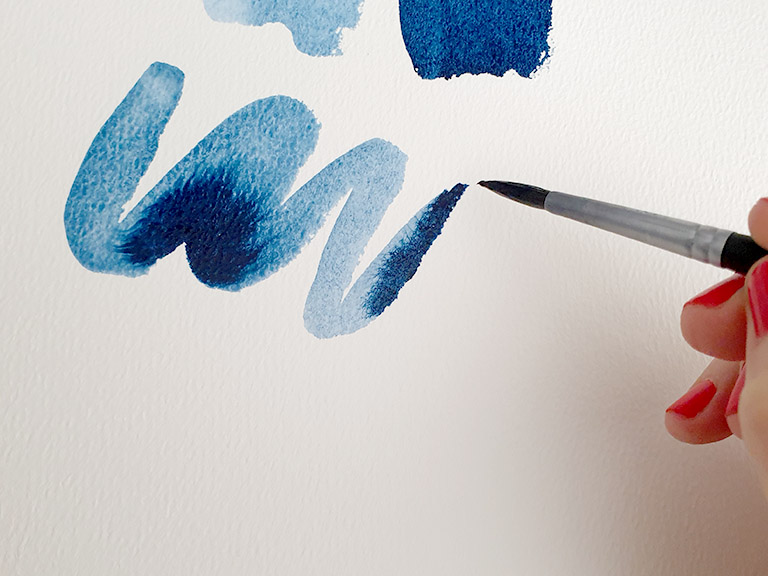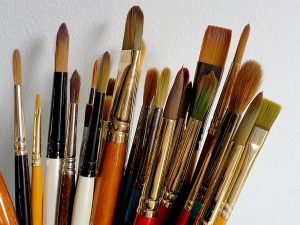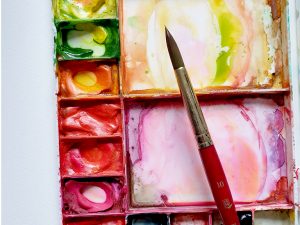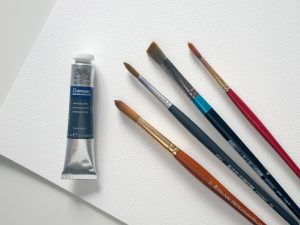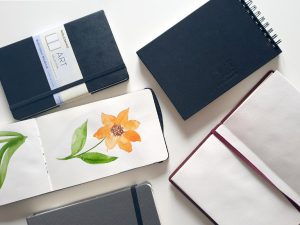Finding the best watercolour paper is, perhaps, the most important part of getting the right watercolour supplies. The same paints and brushes, used on different types of watercolour paper, can have dramatically different results.
Watercolour paper is the base for your art and is essentially like the foundations of a house – if you get that wrong, everything you put on top will seem wrong too.
But there are dozens of different types of watercolour paper available, often at totally different prices! How are you meant to know what to buy, or what is worth the money?
When I started painting watercolour, I found paper the hardest thing to understand. So, to save you time, money and a lot of frustration, here is my ultimate guide to the best watercolour paper for painting. It will cover how watercolour paper works, what the difference is between cold press and hot press, and the best watercolour paper brands to buy from.
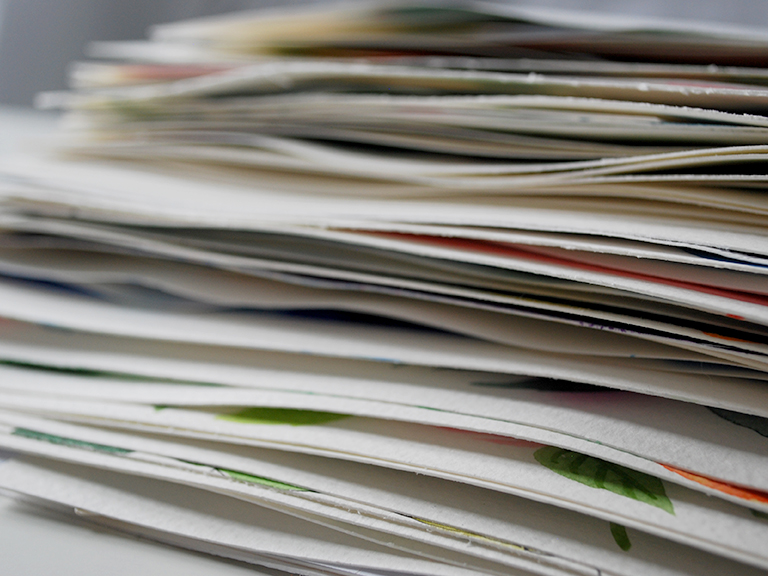
What is watercolour paper?
Watercolour paper is a surface specifically designed for painting with watercolours. The special thing about watercolour paper is ‘sizing’, which is a type of glue used to bind the paper. Sizing helps keep the water and paint pigment on the paper surface rather than letting it soak straight in, allowing the artist to continue working with the watercolour paint before it dries.
Watercolour papers are made with cotton fibres or wood pulp, or a mixture of both. There are many different types and finishes, and it’s available as pads, blocks, sheets or rolls and in a choice of weights and sizes.
Do you need watercolour paper to use watercolours?
Yes, you should use paper that’s specially designed for watercolour. If you use regular printer copy paper for example, or sketchbooks for drawing, you’ll notice that your paints look flat, patchy and dull, and the watercolour becomes impossible to work with. You need good watercolour paper to create smooth blends and watercolour effects.
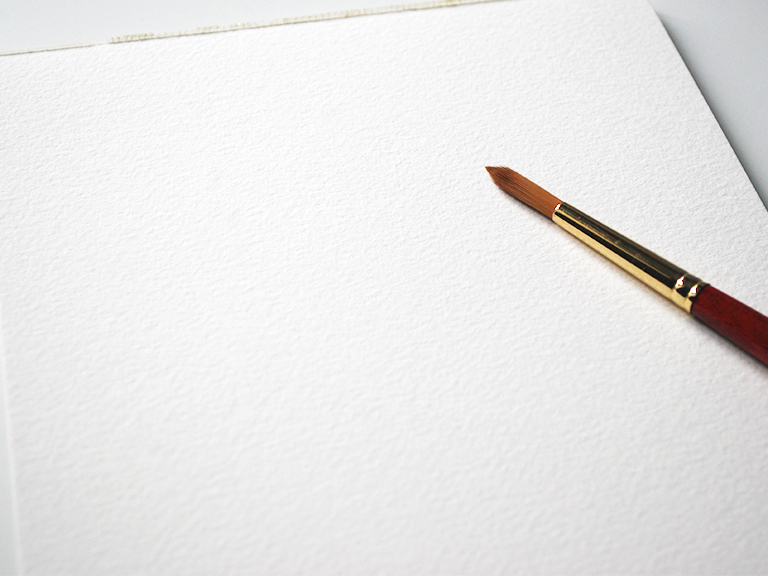
How does watercolour paper work?
Watercolour paper is specifically designed for watercolour painting, and the most important feature is sizing. Sizing is a type of glue that’s used to bind watercolour paper, and it creates a slight barrier on top of the paper, holding the water and pigment on the paper’s surface.
Without sizing, the watercolour paint you apply would be absorbed straight into the paper. And this means it would set in and dry very quickly, without giving you time to blend or add more paint.
The sizing in watercolour paper keeps the water and pigment on the surface for a lot longer. This gives you time to blend and work on your piece, and then ensures that your watercolours dry evenly, avoiding patches of colour with hard edges. Watercolour paper sizing also stops the pigment getting lost inside the paper fibres by keeping them near the surface, meaning that your colours will be strong and vibrant.
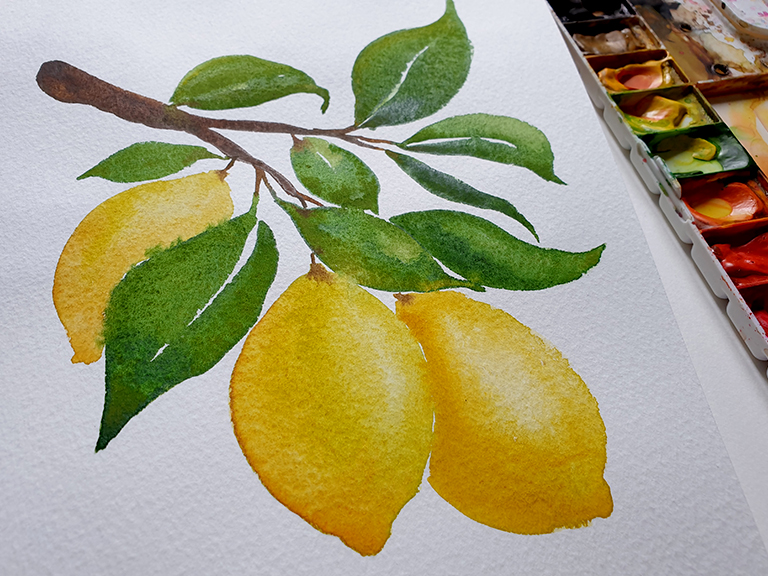
Why does watercolour paper warp and buckle?
Many watercolour beginners struggle with the paper buckling or warping as they paint. This uneven surface creates pools of water that dry unevenly and leave lines or ‘hard edges’ around the puddle. The paper often remains buckled when it’s dry, making it harder to frame or display.
The reason why watercolour paper warps is because the water soaks into the paper fibres and they swell in size – it’s this expansion that creates the buckled surface. While it’s not possible to find watercolour paper that never buckles, thicker papers with more weight hold their shape much better.
Read my guide to watercolour paper warping for more tips.
What is the best weight for watercolour paper?
Watercolour paper is graded by weight, which tells you how thick it is. It can be given in pounds per ream (lb) or grams per square metre (gsm). For the best watercolour paper, look for a weight of at least 140lb or 300gsm.

Do I need to soak or stretch watercolour paper?
Lots of tutorials online recommend stretching your watercolour paper, but it isn’t necessary for beginners. The watercolour paper you can buy from art shops is ready to go, so you can just start painting.
However, if you have a loose sheet, it helps to tape down the edges with masking tape to stop it moving, and prevent too much buckling and warping. Tape it to the table top or something flat and firm.
Cotton vs cellulose – what is watercolour paper made of?
Watercolour paper can be made of either cotton fibres or wood pulp, commonly called cellulose. You can also buy a 50-50 mix of cotton and cellulose. Cellulose is cheaper to produce but creates a lower quality paper, as the wood fibres are not as fine and smooth as cotton.
The best watercolour paper is pure cotton – it creates a smooth, fine paper that’s great at handling lots of water, creating effects like wet-on-wet painting, and gives an even finish when it’s dry.
However, cotton watercolour paper can be expensive, and cellulose is still a good quality paper. For beginners looking for the right watercolour supplies, it can help to have both types of paper – a cheaper cellulose for practising and a higher-quality cotton watercolour paper for finished work.
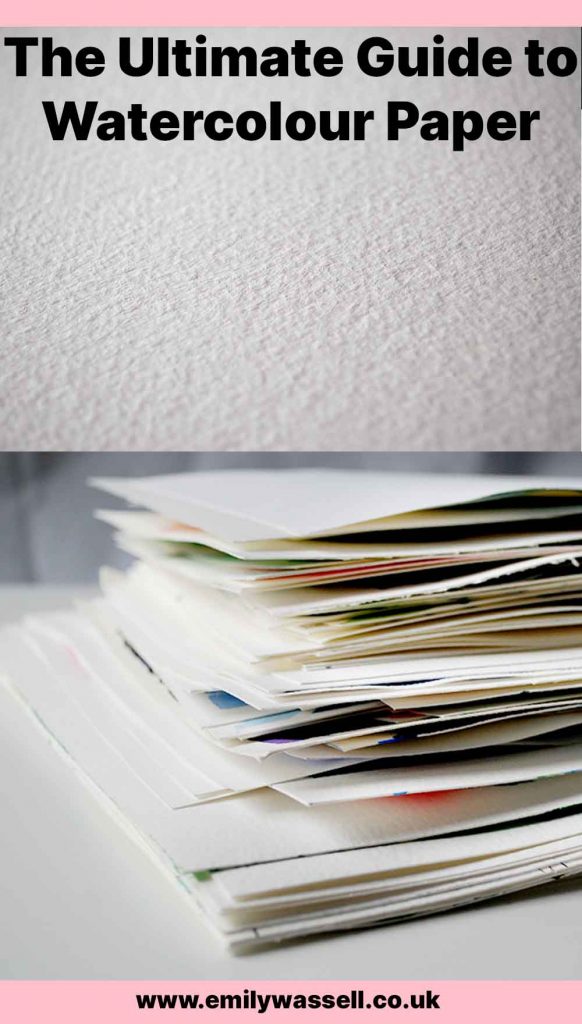
What is hot press and cold press watercolour paper?
There are three types of watercolour paper finish, which are related to how smooth it is – hot press, cold press and rough.
The most common are cold press and hot press. The names refer to the paper manufacturing process – as the paper pulp is pressed into sheets, it can be done with either a hot press, for a smooth surface, or a cold press, for a more textured surface.
Rough watercolour paper
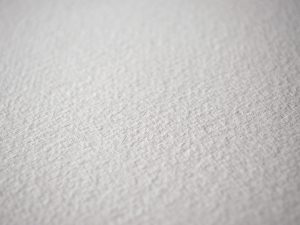
This paper has a textured surface, which can create lovely jagged effects and texture but can make it harder to achieve smooth blends.
Cold press paper
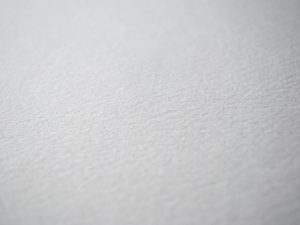
Cold press paper is sometimes called ‘not’ paper. This sits in the middle of paper finishes – it has some texture but a more even surface than rough paper. Cold press watercolour paper has little pockets on its surface that hold more water, giving you time to blend and create wet-on-wet effects.
Hot press paper
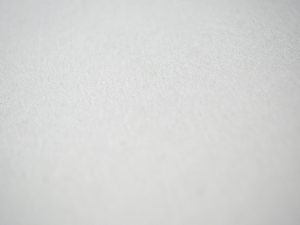
Smooth or hot press watercolour paper has a sleek surface that’s great for layering and creating fine details. However, because there are no tiny pockets for the water, it dries faster which means you’ll have less time to blend or create effects. It can also dry unevenly, creating a patchy finish that some people don’t like.
What watercolour paper type you choose is down to personal preference – you can always test all three to see which suits you best. But for the best watercolour paper for beginners, go for cold press to start with – it’s a happy medium.
Watercolour paper pads, sheets and blocks
You can choose watercolour paper in almost any format, from pads and sketchbooks to glued blocks and individual sheets.
Most watercolour paper is available as pads, either bound together by a spiral ring or glued at one end. You can detach the sheets from glued pads if you want to display or sell your work.
Watercolour blocks are a good choice for people who don’t want to tape down their paper. The sheets are glued together at the edges, either on the two long sides, or on all four sides. This stops the paper warping and helps ensure your work dries flat, but it is more expensive to buy this way.
If you want the cheapest way to buy watercolour paper, you can buy large sheets straight off the roll and cut to size yourself. It’s a bigger investment at the start but works out cheaper in the long run.
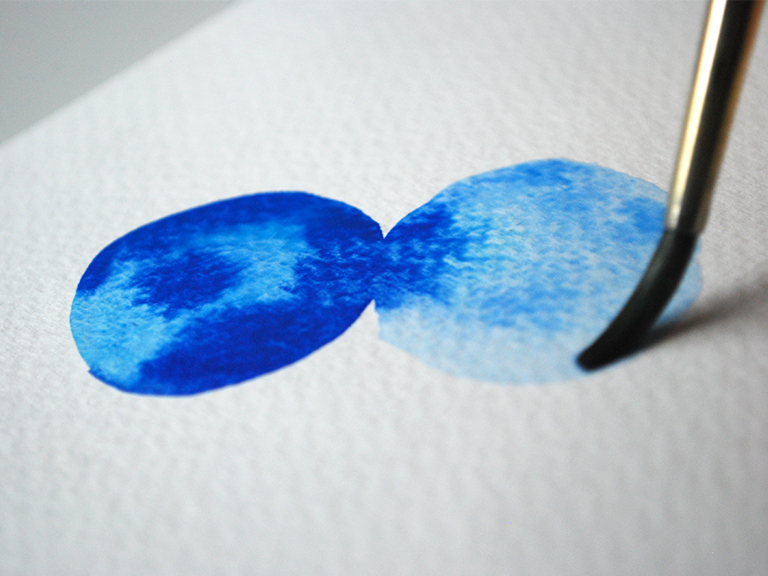
What is the best watercolour paper?
Watercolour supplies are such a personal choice – you might hate my favourite watercolour paper, and vice versa! However, to help you get started I’ve listed the best watercolour paper brands, so you can find what works for you. Note that I have a particular focus on British brands as I like to support local manufacturers, but most of these are available around the world.
Remember that none of my content is sponsored or paid for by any brands – everything you see here is my real, honest opinion to help you choose what’s right for you.
Want to know what I use? Download my full guide to watercolour supplies, including my full supply list, for free!
Best watercolour papers & brands
Winsor and Newton
A good range of watercolour papers in cellulose and cotton. Some people find the sizing is quite strong, so it may be better suited to people who paint with a lot of water.
Daler Rowney
A good range of affordable cellulose papers – I regularly use these papers. The Aquafine is a cheaper range, and Langton is more premium.
Canson XL
A great brand for affordable cellulose papers and a good choice for beginners.
Legion Paper
A more premium brand, their Aqua range is a good cotton watercolour paper.
Arches
Considered one of the most premium brands, these cotton watercolour papers are popular.
Fabriano Artistico
Another premium brand and a good choice if you want loose sheets to cut to size.
Cass Art
Great for beginners, Cass Art sell bumper packs of affordable watercolour paper.
Hannamuele
A popular brand with a wide range of paper types and finishes.
Strathmore
Another good watercolour paper brand with a wide range of options.
St Cuthbert’s Mill
A good range of British paper – Bockingford is a great cold-press option.
While watercolour paper is specifically designed for watercolour painting, it can also be used for other mediums like gouache or ink. However, it may not be suitable for acrylic or oil paints as they require a different surface preparation and may cause the paper to deteriorate.
Look for paper that is 100% cotton, 140lb (300 gsm) and from a reputable brand. If it seems cheap, it definitely isn’t the best quality paper.
Store watercolour paper in a cool, dry place away from direct sunlight, humidity, and extreme temperature changes. Keep it flat or in a protective sleeve to prevent it from becoming damaged or wrinkled.
To fix a mistake in your painting, you can try lifting the paint with a damp brush or paper towel. Add clean water to dilute it as much as possible. Read my guide to fixing watercolour mistakes for more tips.
Yes you can! I regularly use both sides of my watercolour paper. The front usually has slightly more texture but it’s hard to tell the difference and most papers take the paint fine on the back too.
Best watercolour supplies
More guides to watercolour supplies
Download my free watercolour supply guide
Feeling overwhelmed and confused by watercolour paints, papers and brushes? Download my free guide filled with insider info, including a list of good supplies for every budget, and my complete supply list!
